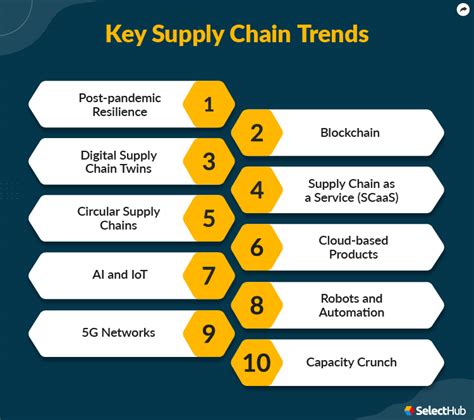Introduction

The global pet food market is booming, with pet owners increasingly demanding high-quality, nutritious food for their beloved companions. To meet this demand, pet food manufacturers are constantly innovating their supply chains and sourcing strategies. This article will explore the latest trends in pet food supply chain management and discuss how innovation is shaping the industry.
Challenges in the Pet Food Supply Chain
The pet food supply chain is a complex and global network that faces a number of challenges, including:
- Raw material sourcing: The pet food industry relies on a variety of raw materials, including meat, grains, and vegetables. Ensuring a consistent and reliable supply of these materials is critical to maintaining production.
- Manufacturing: Pet food manufacturers must operate efficient and cost-effective manufacturing facilities to meet demand. This includes optimizing production processes and minimizing waste.
- Distribution: Pet food must be distributed to retailers and consumers in a timely and efficient manner. This requires a robust distribution network and effective inventory management.
- Regulatory compliance: Pet food manufacturers must comply with a wide range of regulations, both domestically and internationally. This includes meeting safety and quality standards.
Sourcing Innovation in the Pet Food Industry
To address the challenges in the pet food supply chain, manufacturers are increasingly looking to innovation. This includes:
- Blockchain technology: Blockchain can be used to track the provenance of raw materials, ensuring transparency and accountability throughout the supply chain.
- Artificial intelligence: AI can be used to optimize production processes, predict demand, and manage inventory.
- Sustainable sourcing: Manufacturers are increasingly focusing on sourcing raw materials from sustainable sources, such as farms that use regenerative agriculture practices.
- Alternative protein sources: With the growing demand for plant-based and insect-based pet food, manufacturers are exploring alternative protein sources to reduce their reliance on traditional animal proteins.
Case Study: Mars Petcare
Mars Petcare is a leading pet food manufacturer that has implemented a number of innovative sourcing strategies. One example is their partnership with the Sustainable Food Alliance (SFA), a non-profit organization that works to promote sustainable agriculture practices. Through this partnership, Mars Petcare has been able to source a significant portion of their raw materials from SFA-certified farms.
Another example of Mars Petcare’s sourcing innovation is their investment in start-ups that are developing alternative protein sources. In 2021, Mars Petcare invested in the start-up Bond Pet Foods, which is developing a plant-based dog food made from pea protein.
Table 1: Benefits of Sourcing Innovation in the Pet Food Industry
| Benefit | Description |
|---|---|
| Increased transparency | Blockchain technology can provide greater transparency and accountability throughout the supply chain, from raw material sourcing to finished product distribution. |
| Enhanced efficiency | AI can be used to optimize production processes, predict demand, and manage inventory, leading to greater efficiency and cost savings. |
| Improved sustainability | Sustainable sourcing practices can help to reduce the environmental impact of the pet food industry. |
| Expanded product offerings | Alternative protein sources can provide new and innovative product offerings to meet the growing demand for plant-based and insect-based pet food. |
Table 2: Challenges of Sourcing Innovation in the Pet Food Industry
| Challenge | Description |
|---|---|
| Cost | Implementing innovative sourcing strategies can be expensive, especially for small and medium-sized businesses. |
| Complexity | The pet food supply chain is complex and global, making it difficult to implement new technologies and practices. |
| Regulatory compliance | Pet food manufacturers must comply with a wide range of regulations, which can make it challenging to implement new sourcing strategies. |
| Consumer acceptance | Consumers may be resistant to new pet food products that are made with alternative protein sources. |
Table 3: Current Trends in Pet Food Sourcing
| Trend | Description |
|---|---|
| Increased focus on sustainability | Pet food manufacturers are increasingly focusing on sourcing raw materials from sustainable sources. |
| Growing demand for alternative protein sources | The demand for plant-based and insect-based pet food is growing. |
| Use of technology to improve efficiency | Pet food manufacturers are using technology to optimize production processes and manage inventory. |
| Increased transparency throughout the supply chain | Blockchain technology is being used to provide greater transparency and accountability throughout the pet food supply chain. |
Table 4: Future Trends in Pet Food Sourcing
| Trend | Description |
|---|---|
| Precision nutrition | Pet food manufacturers are developing personalized pet food products that are tailored to the individual needs of each pet. |
| Functional ingredients | Pet food manufacturers are adding functional ingredients to pet food products to improve the health and well-being of pets. |
| Novel protein sources | Pet food manufacturers are exploring new and innovative protein sources, such as insects and algae. |
| E-commerce | The growth of e-commerce is changing the way pet food is purchased and distributed. |
Conclusion
The pet food industry is undergoing a period of transformation, driven by the growing demand for high-quality, nutritious pet food. To meet this demand, pet food manufacturers are innovating their supply chains and sourcing strategies. This includes the use of blockchain technology, AI, sustainable sourcing practices, and alternative protein sources. These innovations are helping to improve the efficiency, sustainability, and transparency of the pet food supply chain, and are ultimately leading to better products for pets and pet owners alike.





















